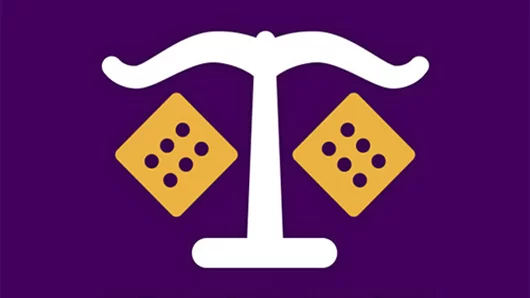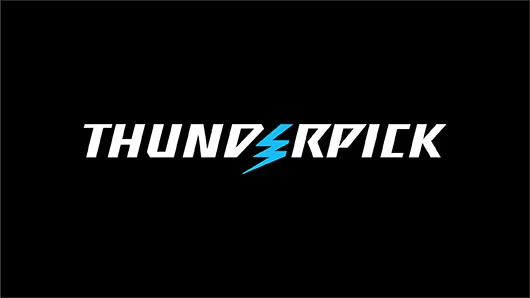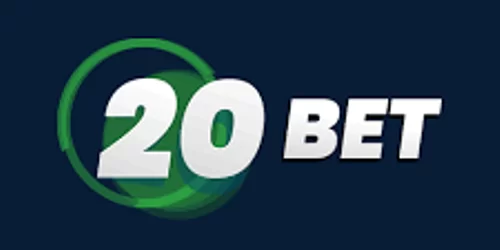Did you like the video? Follow our community and add your comments below…
Tutorial for Dota 2 – tips for beginners and advanced players.
Even though I've written about the general gameplay of Dota 2 before, I've written a small tutorial here for a current occasion to help one or the other person get started. Dota 2 is very complex, so don't be discouraged so fast.
Last-Hitting
The be-all and end-all of Dota is the so-called last-hitting, which means nothing else than that the player takes the last hit on a creep. In this case, the player not only receives the normal experience points, he also gets gold, which is very important in the game to buy powerful items to become even stronger. Especially at the beginning, load-hitting is not that easy due to the low damage that a low-level character produces. Here, besides practicing the right timing, the right starting items help. Besides the Quelling Blade, these are all items that deal damage or increase your primary attribute. But keep an eye on your item build – more on that later.
Denying
Denying is a special form of load-hitting. Here, a player performs the final blow on one of their own creeps, preventing the opponent from gaining gold, and at the same time decreasing the experience points for the opponent. But not only the last blow, but also the process of reducing the life points of your own units with the final goal of also performing the last blow, which is called denying, is called denying. The own units can be attacked only from a certain percentage clash of Creep Waves at Dota.
Creep Wave
Be careful not to push your Creep Wave too much – that is, you don't help your Creeps so much that they keep getting closer and closer to the enemy Tower, unless you want to and can take it down. The best way to do this is to have control over the Creep Waves, so that you can fight near your tower to slip into its protection if necessary, the Creep Waves are at the level of the side store to equip you on the side, or you push to attack the enemy tower. Important techniques for this are, besides the already mentioned denying, also the so-called pulling.
Pulling Creeps
Pulling creeps means that the player briefly attacks neutral creeps and lures them to his lane by running away. Ideally, this should happen at the moment when a group of own creeps runs past, which then attack the neutral creeps. The player can also stop at the creeps and perform the load hits on the neutral creeps for gold. The advantage of this technique is that the own creeps are now not killed by the opponent or enemy creeps and thus the other side loses potential experience points and gold. The front of the creep waves moves closer to the own tower. Creep Pulling at Dota with the Witch Doctor.
Stacking of Creeps
Similar to the stacking of creeps, neutral creeps are attacked and pulled away by a hero. However, this happens just before new neutral creeps spawn. The hero simply runs away, the neutral creeps break off the pursuit and go back to their camp, where new neutral creeps have spawned in the meantime. Stacking should help the hero farm more effectively in the jungle.
Jungling
Jungling is in contrast to farming on the lane a farming in the forest or jungle. The hero kills neutral creeps to get experience points and gold. The reason for farming in the forest is often the hope to do it in peace. After all, usually no enemy heroes interfere with load-hitting. However, the enemy team likes to take action by simply exploring the enemy forest. This happens especially when typical hard Carrys like Naga Siren and Anti-Mage are missing on the lane – otherwise it becomes too dangerous in the late-game when these heroes can farm in the Jungle in peace. The stacking of neutral creepcamps by a support helps the jungler.
The Outlander update has made Jungling more attractive again. Neutral creeps now have a certain chance to drop items when they die, which are not available for purchase. The later they are “found” in the game, the more powerful these items are. Once picked up, they can be right-clicked and transported to the warehouse, where any team member can have them sent to them – in the store view, this is the “neutral items” tab. Depending on the bonuses to a certain trait or ability, these items are better suited to a hero.
The runes
Since the Dota 2 Dawnbraker update (7.29), there are only four rune spawn points. One in each of the forests on one side of the river. And again two in the river. At the beginning gold runes spawn on all four spots. After the Outlander update there are now two spawnpoints for gold runes in the river, two spawnpoints for action runes in the river and one gold rune spawnpoint in the forest of each team.
On the gold rune spawnpoints, gold runes appear at regular intervals – currently every three minutes – which bring gold to the heroes. At the beginning of the game, the team should try to get the gold runes in their own half and on the river. Also it is popular with an invisible hero in the early stage of the game to steal a gold rune in the enemy forest. The gold runes stack, i.e. if a rune is not taken it does not expire, but there is another rune on the runespot after the time has elapsed, and so on.
Seven types of runes can spawn on the action rune spots in the riverbed:
Double damage runes: these double the damage – who would have thought that?
Illusion runes: These create two illusions from the trigger, which the trigger can also control
Regeneration runes: Regenerate all life and mana points
Haste runes: Increase the speed of the trigger
Arcane Runes: Increase mana regeneration and decrease the mana cost of spells and abilities.
Invisibility runes: Make a hero invisible
Rune of the Source – restores 100 health and 80 mana and appears only in the second and fourth minute
The effects are effective only for a certain time – except for regeneration, which replenishes everything once. For the mid-hero, it is often worthwhile to get a Bottle to store the runes in, and use it to replenish the Bottle as well. Using the bottle then gives him back life and mana points.
The Shrines
At them, heroes can recharge their health and mana points. However, it takes five minutes for the shrines to get a new recharge. So choose the use wisely and let your fellow heroes participate in the recharging process. Enemy shrines can be destroyed when a level three tower, that is, one that is on the enemy high ground, has fallen.
Outposts
With the Outlander update, the two side stores as well as the shrines were removed, but instead a new game element came into play with the Outposts – Pun intended. Currently there are two outposts, each located in one of the jungles and belonging to one team at the start. They offer the advantage that there is another point – besides towers and base – to which the players can teleport. In addition, they provide True Sight in a small radius, i.e. allow to see invisible enemies.
Besides the already mentioned teleport possibility, the team owning at least one outpost gets more experience points per over the game time to experience points or the team without outpost less. This makes owning outposts very valuable, especially in the earlier stages of the game. However, enemy outposts cannot be captured until at least one of the opponent's level two towers has been destroyed.
Warding and Dewarding
Warding actually deserves its own article and especially a map with the different ward positions. Good warding can, no, will decide a game in most cases. There are two types of wards:
Observer Wards – these are used for simple recon and show all heroes on a team the area around that Ward, as if they were there themselves.
Sentry Wards – these Wards reveal invisible units and enemy Wards so that they can be attacked and destroyed. This is also called Dewarding.
Good Ward positions are usually already marked on the board by a symbol and are usually on an elevation. In general, good ward positions are those that allow observing the following places:
The stairways to your own or your opponent's Jungle.
The jungle next to the safe lane, to protect yourself from enemy ganks.
The Secret Shops
In the later game: The entrance to Roshan
Roshan
You will have noticed the larger cave in the river. There you will find Roshan in the later game. Roshan is basically a very very very strong creep. Defeating him not only brings gold and experience points for the whole team, but also the so-called Aegis. This automatically revives the hero wearing it if he should die. A popular tactic is to get the Aegis before attacking the enemy base. The Aegis should ideally be in the possession of the strongest hero.
Hero selection and hero team
When selecting heroes, it is important that the heroes in a group are both well matched to each other and well matched to the enemy. This can be synergy in pushing or teamfighting, as well as simply countering the opponent's abilities. The Bounty Hunter, for example, is a good counter to Riki, who is then simply tracked by the Bounty Hunter, so that Riki's invisibility becomes useless. A Silencer, on the other hand, is more worthwhile if the opposing team has a lot of heroes who draw their strength from spells or abilities. Which heroes fit well together in a team can be evaluated with the help of http://dotateam.me. I also recommend the pages Dotabuff, OpenDota and the Dota Picker.
Hero-Build and Item Build
Besides the team build, learning the skills and buying the right items in the right order is also important. What is the right order depends on the hero himself, the heroes in the opponent's team as well as in your own team and the strategy planned by yourself and your team.
Build suggestions are available in the game itself, as well as on Dotabuff and with the subscribable Dota-Plus . They are all just suggestions. Since it depends on how a player wants to play his hero.
Of course, both the hero and the item build must be adapted to the game situation. For example, if you notice that the Phantom Assassin is too strong in the opponent team, it's time for the Monkey King Bar, which ignores its evasion ability.
Leave a comment
You must be logged into post a comment.


































26 Replies to “Dota 2 – 5 Mechanics You may not Know About”
You'll get big soon.
Very usefull!Thanks!!!
Nice insight, Thanks! (Y)
If you're about to die and you have instant respawn timer, you can chain right before you die, and if you time it right, you can chain right back into the fight. I've done this a couple times and its really hard to pull off, but very satisfying when you do something like a global chain 😀
Interesting video. upload more of these! subbed
i feel all this is very common knowledge, unless your extremely new you really should know, also work on your confidence, you seem almost afraid youll be wrong when you talk
Last one is better but still good work
Hm, I knew all of that except guiding WD's ward, could be useful I guess.
Thanks ! it helps a LOT. Really like your voice and personality. You're bit like Baumi. Thumbs up and sub 🙂
5 mechanics 2k players may not know about
more pls
we like
but if pudge throws a hook, dies, and instantly respawns, will he fountain hook dat ass?
The fifth one is not exactly true. You can timberchain and when the timber connects suicide or get killed. If you insta respawn you will be hooked with the chain and travel to the hook chain location.
You actually can do that Timberchain-Trick anywhere, as long as you die while traveling, you will get where you wanted to be after Respawn.
Scenario: Timbersaw uses Timberchain to get out of Rosh-Pit, but still gets killed by a 6Million Echoslam. He respawns at Dire Fountain, but because his chain already was at the tree, he gets transportet to the river.
(And dies once again…)
You can also switch target with WD ward without selecting the ward by using CTRL group.
about the timberchain, I was at the middle of the map
-timberchained a tree
-accidently denied myself with blood stone
-immediately respawned
-and chained through half of the map 😀
About the instant respawn one, it's pretty common on Puck to throw a Q right before you die, so you can pop back into fight instantly.
when bladmill active you will get LS if u have a OCT core… really useful on a hero like necro
My friend played timbersaw died when chaining and traveled to the enemy base in 5 s XDDDD
wow, i liked the bottle exploit 🙂
timber chain doesnt need to be close to the fountain to continue after death. If timber is killed while moving along the chain before the tree gets cut, then he will respawn and fly across the map to that tree. Happens more often than one would think
Does that blood stone suicide thing work with clockwork and pudge ????
do things like Daedalus work with wd ulti?
wtf he gets that tusk skin i love it but dont know how to get someone can tell me?
what is the different between shadow blade and silver edge
[…] so far, there are a lot of great matchups waiting ahead, and plenty of reasons to be happy for all Dota 2 […]